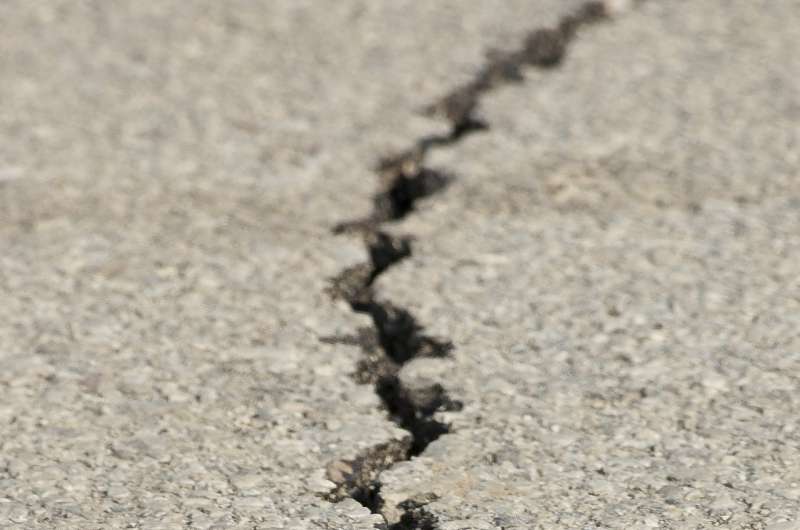Study maps stress changes around fault activated by hydraulic fracturing

Researchers were able to observe stress changes before and during an earthquake induced by hydraulic fracturing in Alberta, Canada, with the help of a phenomenon called seismic anisotropy.
Seismic anisotropy refers to changes in the velocity of seismic waves dependent on the "fabric" of the rocks that the waves pass through. The pattern of anisotropy changes at the Canadian site was most likely created by a network of tensile hydraulic fractures created during fluid injection, the scientists conclude in Seismological Research Letters.
By mapping changes in anisotropy, the researchers hope to monitor the processes that take place when hydraulic fracturing causes induced earthquakes, said Nadine Igonin of the University of Texas at Austin and colleagues.
The international research team analyzed anisotropy changes observed in 300 seismic events that were recorded on a dense seismic array of 98 geophone stations put in place to monitor hydraulic fracturing of the Duvernay Shale Formation in Alberta's Fox Creek area. Hydraulic fracturing in the region has produced several induced earthquakes, including a magnitude 4.1 earthquake that took place during the study.
"This case study was particularly interesting because, while the hydraulic fracturing took place in the Duvernay Shale formation, the observed seismicity occurred in the overlying Wabamun formation, 300 meters above the hydraulic fracturing zone," Igonin explained.
"Hence, there were important unanswered questions as to how the hydraulic fracturing had managed to reactivate a fault so far above the reservoir unit."
The geophone arrays were buried at the bottom of shallow, near-surface wells, instead of the deeper, downhole arrays often used for seismic monitoring. "Our findings required detailed monitoring of anisotropy changes across the entire area of hydraulic fracturing, which could only be achieved with a surface or near surface array, with monitoring stations spread over a wide area," said Igonin.
The researchers found that the strength of seismic anisotropy increased in some regions and decreased in others systematically, surrounding the hydraulic fracturing injection well. They then compared the observed anisotropy to models of stress change caused by different processes, including tensile hydraulic fracturing opening, microseismic events on existing faults or fractures and aseismic slip.
The anisotropy changes were most like those that would be observed in the case of a network of hydraulic fractures formed after fluid injection, the researchers found, especially a case where the growth of those fractures was limited by intersecting with an existing fault in the region.
Using this information to assess stress changes at the hypocenter of the magnitude 4.1 fault, Igonin and colleagues' model showed a significant stress change associated with fault failure 24 hours before the earthquake.
Being able to resolve these kinds of stress changes over time, Igonin said, could be useful information for managing and mitigating induced seismicity not just in hydraulic fracturing, but also in wastewater disposal, carbon storage, and enhanced geothermal energy production.
"We have observed a range of different mechanisms by which faults have been reactivated by injection, including direct flow of injected fluids into faults, as well as more complex effects involving the geomechanical transfer of stress through the subsurface, as described in this paper," she said.
"If we are to produce more effective strategies to mitigate induced seismicity, then we need to fully understand the relative contributions of these different effects in reactivating subsurface faults."
More information: Nadine Igonin et al, Seismic Anisotropy Reveals Stress Changes around a Fault as It Is Activated by Hydraulic Fracturing, Seismological Research Letters (2022). DOI: 10.1785/0220210282
Journal information: Seismological Research Letters
Provided by Seismological Society of America


















